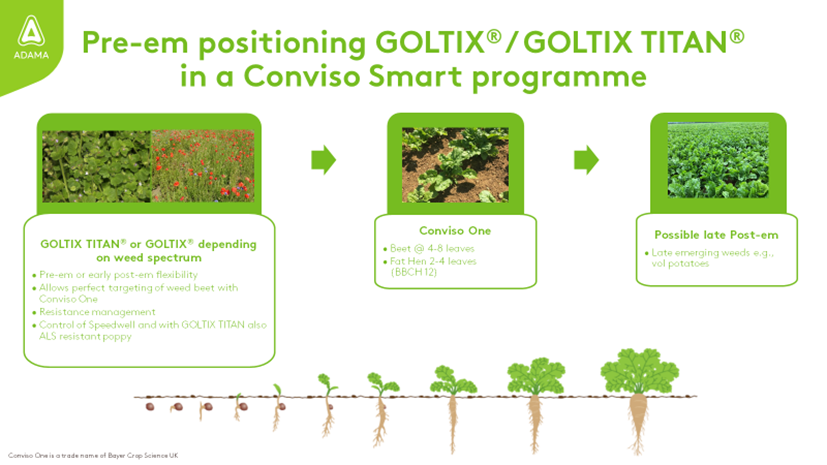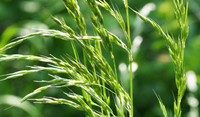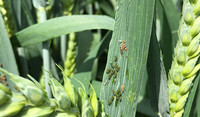Using GOLTIX TITAN in ALS resistant sugar beet
All three weeds should therefore be targeted with additional modes of action as part of an herbicide resistance stewardship approach in ALS resistant beet.
At the same time, it is also important to consider speedwell species as these are not well controlled by most ALS inhibitors, and in an ALS resistant sugar beet crop can be considered a gap in the expected weed control spectrum.
Metamitron to the rescue
Two of ADAMA’s beet-specific herbicides, GOLTIX TITAN (metamitron 525 g/L + quinmerac 40 g/L SC) and GOLTIX (metamitron 700g/L SC), are well-suited for inclusion in an ALS stewardship programme as they both offer good control of the target weeds and have an excellent history of good crop safety. They also benefit from being able to be applied at their maximum individual dose rates from the pre-emergence timing (including at the peri-emergence stage).
Common poppy
GOLTIX TITAN is the best option for the control of ALS resistant poppies thanks to its additional active ingredient, quinmerac.
Two suggested programmes for the control of ALS resistant poppy are as follows:
Option A
1.Pre-emergence application of GOLTIX TITAN (2L/ha)
followed by
2.Post-emergence (T1) application of GOLTIX TITAN (1.3 L/ha) plus any additional actives required (e.g. a low dose of phenmedipham and ethofumesate and an oil adjuvant)
Option B
1.Very early post-emergence application of GOLTIX TITAN (1.5 L/ha)
followed by
2.Post-emergence (T2) application of GOLTIX TITAN (1.5 L/ha) plus any additional active ingredients required (e.g. a low dose of phenmedipham and ethofumesate and an oil adjuvant)
Mayweed
Both GOLTIX and GOLTIX TITAN provide good control of mayweed species, with the efficacy of typical programmes ranging from 80 to 100%. However, a single application will not suffice in weed populations with ALS insensitivity. Therefore, in order to ensure a durable and high level of control, applications should be continued until weed emergence is complete.
Chickweed
A pre-emergence application of GOLTIX will provide a good start to chickweed control, although GOLTIX TITAN will provide a slight advantage (approximately +5% efficacy compared to GOLTIX). This is due to the quinmerac in GOLTIX TITAN which will primarily be absorbed via the weed’s root system, but can also be absorbed via foliar contact. As such, GOTIX TITAN will also work well as a post-emergence treatment.
For the best results, post-em applications should be made as early as possible (when the weeds are from cotyledon to the two-leaf stage) and when there is adequate soil moisture to support rapid root uptake.

Notes: Resistance to ALS sulfonylurea herbicides in chickweed, poppy and scentless mayweed was first identified in the UK in 2000, 2001 and 2002, respectively. Data from a resistance summary by Stephen Moss for Weed research action group (WRAG) 2016.


